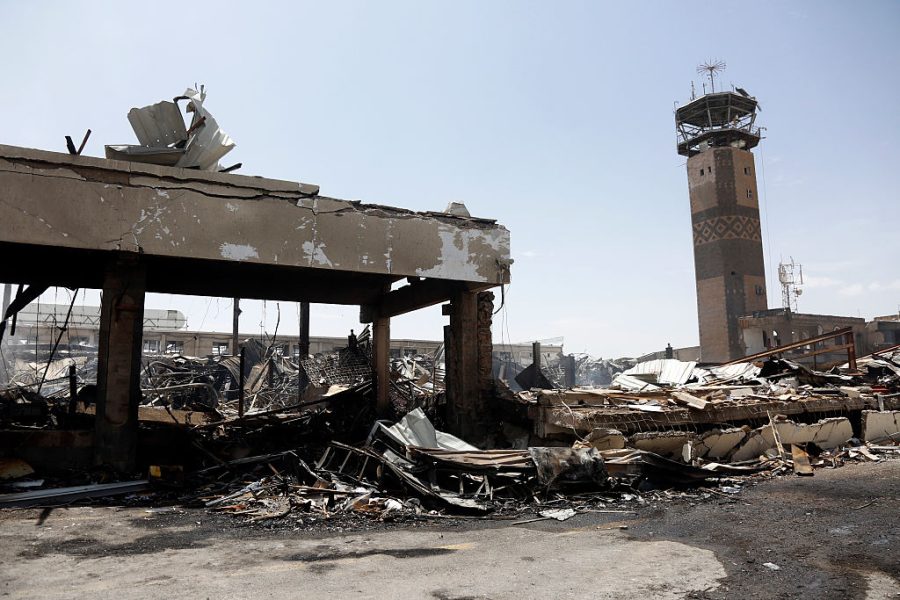Last night, Israeli fighter jets struck multiple military targets belonging to the Houthi terrorist regime in Yemen, marking one of the most expansive and targeted responses to date. Among the sites hit were the ports of Al Hudaydah, Ras Isa, and Salif, as well as the Ras Kanatib power plant. The IDF confirmed that the Galaxy Leader, a commercial vessel seized by the Houthis in November 2023 and repurposed for terrorist use, was also among the targets struck.
The Israeli military described the operation as a direct and forceful response to the repeated missile and drone attacks launched by the Houthis against Israeli territory. The Houthis, an Iranian-backed militia operating from northern Yemen, have fired dozens of ballistic missiles, cruise missiles, and armed drones at Israel since the outbreak of the war with Hamas on 7 October 2023. While many of these threats have been intercepted, several have reached Israeli territory, causing injuries, disruption, and, on at least one occasion, loss of life.
Israel’s coordinated campaign to neutralise the threats from Iran’s regional network continues relentlessly
This latest operation represents a new phase in Israel’s strategy, directly confronting the Houthis’ ability to launch long-range attacks and to use civilian infrastructure, including ports and energy facilities, for military purposes. The Israeli Air Force acted on intelligence gathered by the IDF Intelligence Directorate and the Israeli Navy, which revealed that these sites were being exploited for weapons transfers from Iran and for launching attacks against both Israeli territory and international maritime traffic.
The campaign follows a sustained pattern of escalation by the Houthis. On 19 July last year, a Houthi drone struck an apartment building in Tel Aviv, killing one civilian and injuring several others. On 4 May this year, a ballistic missile fired from Yemen landed within the perimeter of Ben Gurion Airport, injuring eight and halting operations. A subsequent missile was intercepted over the same area days later, triggering renewed alarm and calls for a robust Israeli response.
The Houthis have also conducted a campaign of maritime disruption in the Red Sea and Bab el-Mandeb Strait. More than 100 vessels have been attacked using a mix of drones, missiles, naval mines, and armed assaults. At least two commercial ships have been sunk, four civilian sailors killed, and one vessel, the Galaxy Leader, was hijacked and held for months, then turned into what Israel now identifies as a platform for terror activity.
The most recent Houthi maritime assault, on 6 July, targeted the Magic Seas, a Greek-owned cargo vessel. The Houthis launched a coordinated, multi-pronged attack involving drones, missiles, and small arms fire, forcing the crew to abandon ship. Though the vessel had no verifiable Israeli link, the Houthis claimed responsibility, continuing their pattern of indiscriminate aggression under the guise of ‘resistance’.
Israel’s 60 retaliatory strikes last night were as much strategic as symbolic. They targeted not only military infrastructure but also the logistical arteries that enable Iran’s proxy war from Yemen. By striking at the Ras Kanatib power station and three key ports used to transfer weapons from Iran to the Houthis, Israel aimed to degrade the group’s operational capacity and to send a clear message: use of civilian infrastructure for terrorist activity will not be tolerated.
These events unfold against the backdrop of Israel’s broader regional campaign against Iranian proxies. Over the past year, Israel has conducted a series of high-impact operations, including most recently its impressive strikes inside Iran, damaging key facilities in its nuclear and ballistic missile programmes. Before that 12 day war, it also succeeded in undermining Hezbollah’s operational capabilities through targeted assassinations, the disruption of supply routes in Lebanon, and the destruction of weapons stockpiles. In Syria, Israeli strikes rolled back Iran’s efforts to establish a permanent military presence, dismantling command centres and ensuring the post-Assad regime could not rely on nearly as much capability against Israel.
Israel’s coordinated and multifront campaign to neutralise the threats posed by Iran’s regional network, from Gaza and southern Lebanon to Syria, Iraq, and now Yemen, continues relentlessly. It has restored its military deterrence in the region, and continues to send a clear message to its hostile neighbours. Now it seems it is the turn of the Houthis, once viewed as a distant menace, to discover Israel’s determination to eliminate its greatest threats.







Comments